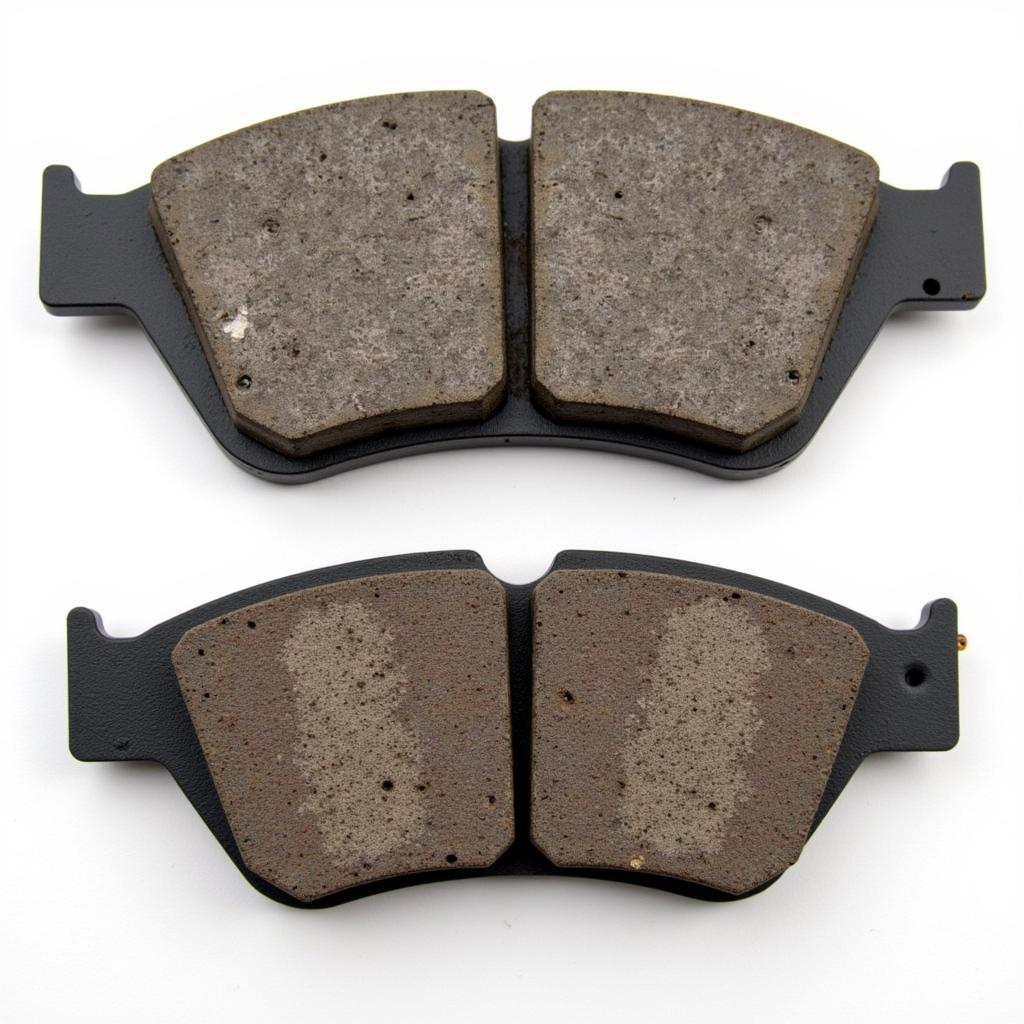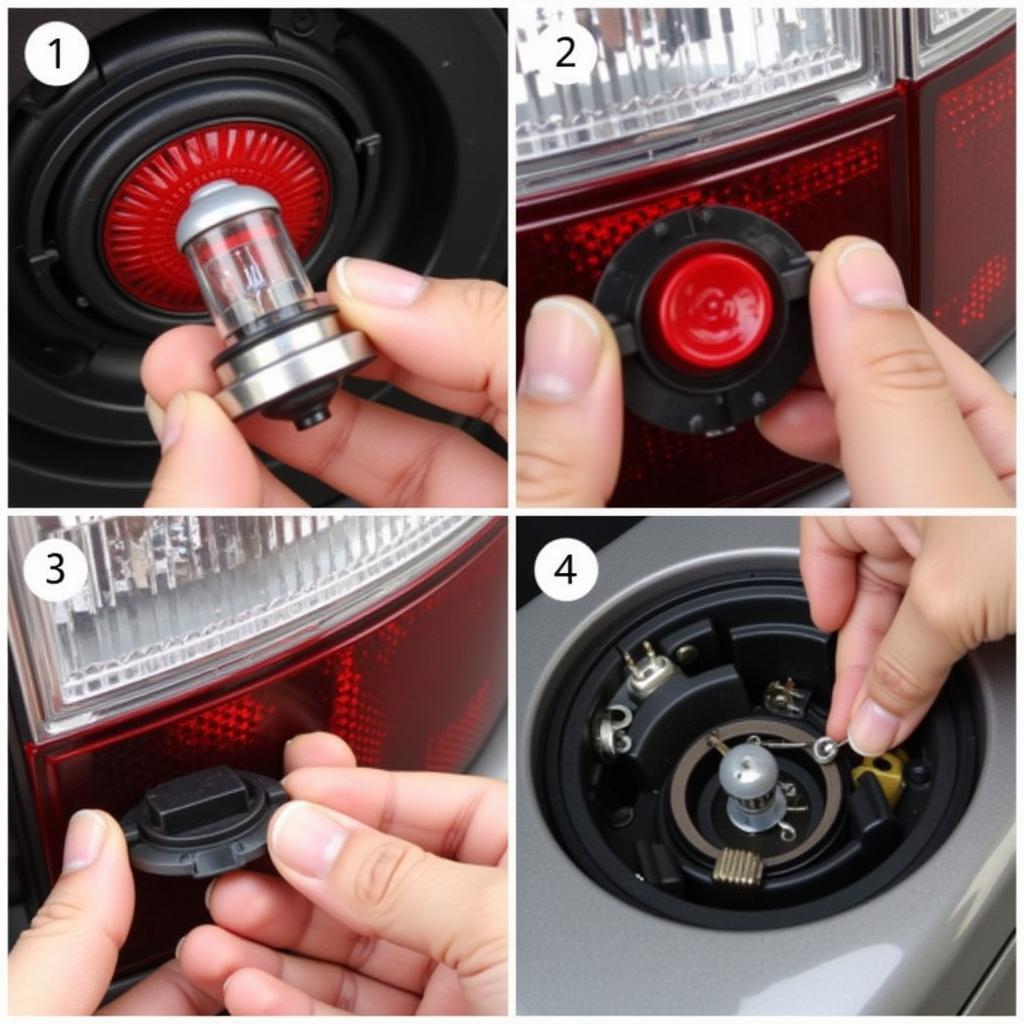Few things are scarier than hitting the road and seeing your brake warning light illuminate on the dashboard. That sudden jolt of fear is understandable. After all, your brakes are vital to your safety and the safety of others on the road.
But don’t panic just yet. While a glowing brake warning light signals a problem, it doesn’t always mean a catastrophic failure. Let’s dive into the common reasons why your brake warning light might be on and what you should do about it.
Common Reasons Your Brake Warning Light is On
The brake warning light is connected to several components within your braking system. Understanding what each light pattern might mean can help you narrow down the issue:
- Solid Red Light: This typically means one of two things: Your parking brake is engaged (a simple fix!), or your brake fluid level is low.
- Flashing Light: A flashing brake warning light is often more serious and usually indicates a problem with your ABS (Anti-lock Braking System) or another electronic brake component.
Here’s a closer look at some of the most common culprits:
1. Low Brake Fluid
Why it matters: Brake fluid is the lifeblood of your braking system. It’s a hydraulic fluid that amplifies the force you apply to the brake pedal, allowing you to stop your vehicle. When brake fluid is low, it can’t effectively transmit the force needed to engage the brakes.
What to do: Check your brake fluid reservoir. It’s usually located near the firewall on the driver’s side and has a clearly marked minimum and maximum line. If the fluid level is low, carefully top it off with the correct brake fluid type specified in your owner’s manual. However, if you notice a consistent need to add brake fluid, you likely have a leak that needs immediate attention from a mechanic.
2. Worn Brake Pads
Why it matters: Your brake pads are designed to wear down over time as they create friction with the brake rotors to slow or stop your vehicle. Most modern vehicles have a sensor in the brake pads that triggers the brake warning light when the pads reach a certain level of wear.
What to do: If your brake pads are worn, you’ll need to replace them as soon as possible. Driving with worn brake pads can damage your rotors, leading to costly repairs.
 Worn Brake Pads
Worn Brake Pads
3. Faulty Brake Caliper
Why it matters: Your brake caliper houses the pistons that push the brake pads against the rotors when you press the brake pedal. A sticking or seized caliper can cause uneven brake pad wear, reduced braking performance, and even make your car pull to one side when braking.
What to do: A faulty brake caliper often requires professional diagnosis and repair. It might involve rebuilding or replacing the caliper entirely.
4. ABS Issues
Why it matters: Your Anti-lock Braking System (ABS) is a critical safety feature that prevents your wheels from locking up during hard braking, helping you maintain steering control. If the ABS warning light is on, it could indicate a problem with the ABS module, wheel speed sensors, or other related components.
What to do: Due to the complexity of the ABS system, it’s best to have a qualified mechanic diagnose and repair any issues.
5. Other Potential Causes:
- Faulty Brake Light Switch: This switch activates your brake lights when you press the brake pedal. If it malfunctions, it can also trigger the brake warning light.
- Brake Line Leak: A leak in your brake lines can lead to a dangerous loss of brake fluid and pressure.
- Master Cylinder Problems: The master cylinder is responsible for distributing brake fluid to the wheels. A failing master cylinder can compromise your entire braking system.
What to Do When Your Brake Warning Light Comes On
If your brake warning light comes on, it’s crucial to take action immediately to ensure your safety and the safety of others on the road. Here’s what to do:
- Pull Over Safely: As soon as it’s safe, pull over to the side of the road or a safe location.
- Check Your Parking Brake: Make sure your parking brake is fully released. It’s a simple step but an easy thing to overlook.
- Inspect Your Brake Fluid: Carefully check the brake fluid level in the reservoir. If it’s low, add the correct type of fluid as a temporary measure.
- Call a Mechanic: Regardless of whether you can add brake fluid, it’s essential to have your vehicle towed to a trusted mechanic for a thorough inspection.
“Ignoring your brake warning light is like playing Russian roulette with your safety,” says master mechanic, John Smith from Smith’s Automotive. “Even if your brakes seem to be working fine, there could be an underlying issue that needs immediate attention.”
FAQs About Brake Warning Lights
Q: Can I drive with my brake warning light on?
A: It’s never advisable to drive with your brake warning light on. Doing so puts you and others at risk. Have your vehicle inspected by a mechanic as soon as possible.
Q: How much does it cost to fix a brake warning light issue?
A: The cost varies depending on the underlying problem. A simple brake fluid top-up might cost a few dollars, while a brake caliper replacement could be several hundred dollars.
Q: How often should I check my brake fluid?
A: It’s a good practice to check your brake fluid level at least once a month and top it off as needed.
Remember, your brakes are one of the most critical safety systems in your vehicle. By addressing any brake warning light issues promptly and proactively maintaining your braking system, you can enjoy safer driving for miles to come.

